3 Easy Ways to Transition to a Charlotte Mason Homeschool Style
For the majority of our homeschool years, I referred to our homeschool style as “classically eclectic with a Charlotte Mason twist.” We were never strongly Charlotte Mason and certainly not purists. But, we included enough elements that people sometimes asked me how to transition to a Charlotte Mason homeschool style.
Families are understandably uncomfortable with the idea of tossing their current curriculum to jump headfirst into a Charlotte Mason style. I get that. You don’t have to do that! Hold on to your curriculum and try these suggestions for a relatively painless transition.
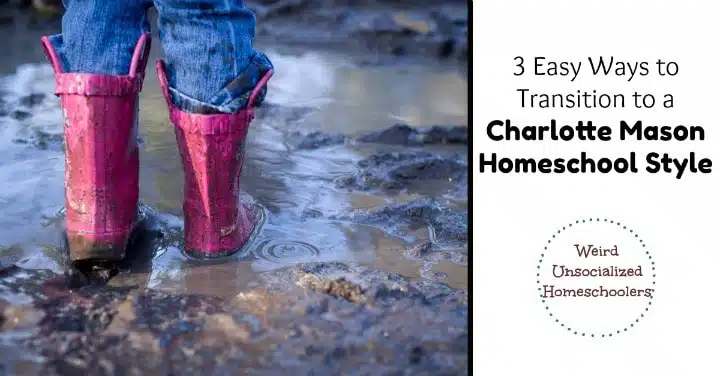
1. Use your current curriculum as a foundation.
Use your current curriculum as a starting point for embracing more CM philosophies. From there, continue to build as you grow more confident and refine your family’s homeschooling style.
A great place to start is by adding in living books based on what your kids are learning in history. Biographies, period literature, and historical fiction are all excellent options. For example, if you’re learning about westward exploration and expansion, try a biography of Sacajawea or a Little House on the Prairie book.
If you’re looking for a great biography series for young kids, don’t miss David Adler’s Picture Book Biography series. We also love the Heroes of History series for older kids. Both are two of our family’s favorite biography series.
You can apply the same concept to science. If you’re learning about birds, borrow books about birds from the library, rather than just reading the textbook excerpts.
Check out the extensive resources on Ambleside Online for more ideas of books that you might want to enjoy with your kids. You can even study biology in a CM style using traditional textbooks as a starting point. Check out these tips for incorporating living books with Apologia biology.

One word of caution about using living books: Don’t think you have to read entire chapters in one sitting. I used to be terrible about that, and my poor kids’ eyes would glaze over long before I finished. Go by your kids’ attention span and interest levels. If that’s only 5 or 6 pages a day, that’s fine. It may take you a while to get through the books, but the goal is retention and engagement, not checking off lesson plan boxes.
2. Try copywork or dictation and narration.
Copywork and dictation were Charlotte Mason’s primary methods of teaching spelling and grammar, and narration is the precursor to composition.
Copywork
The choice between copywork and dictation will depend upon your child’s ability level. For young children, begin by having them copy a line or two from something you’re reading such as an interesting quote from a textbook or a sentence or two from the living book you’re reading. Teach them to pay attention to spelling, capitalization, and punctuation.
Students can begin copying longer, more complex passages as their skill level allows. Ultimately, they’ll move on to dictation. That’s where they transcribe a selection read aloud to them, taking care to use the appropriate spelling, capitalization, and punctuation.
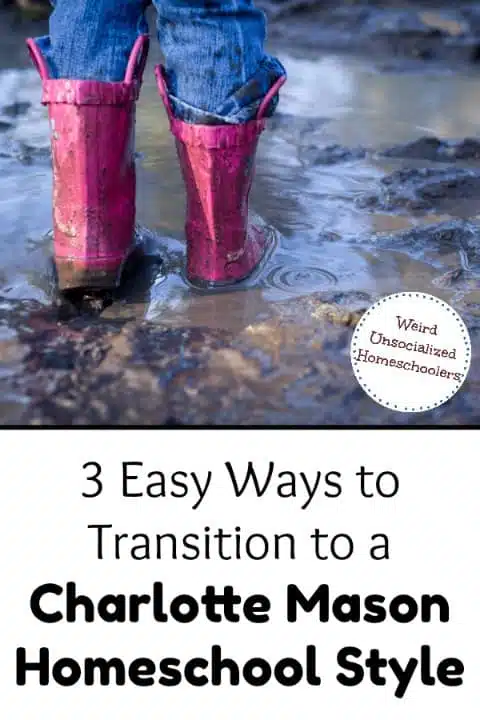
Narration
Narration is essentially oral composition. A student retells, in his own words, what he’s just read, heard, or learned. Start simple with narration and do lots of modeling. Initially, you may have to ask a lot of questions, then, rephrase your children’s answers in complete sentences. Susan Wise Bauer, author of the Story of the World series, suggests having students repeat your rephrased sentences until they get the hang of answering in complete sentences.
After kids learn to narrate, it is much easier for them to transition to putting their thoughts on paper. Start by writing down what they narrate to you. As their skill level increases, your kids can start writing out their own narrations.
When my kids were first learning narration, I’d write their words on the notebooking page and let them draw a picture to go with it. Visit The Notebooking Fairy for a variety of free notebooking pages.
While they may seem simplistic, copywork, dictation, and narration are proven effective techniques for teaching grammar, spelling, capitalization, and punctuation. And, narration provides a simple way to practice composition long before a child is ready to put original ideas on paper.
You can continue using these methods successfully all the way through high school, as the article, How I Raised a Professional Writer Without a Composition Program demonstrates.
3. Incorporate nature study and/or artist and composer study.
Nature study is one of the quintessential components of a Charlotte Mason homeschool. Plus it provides a sense of “permission” to get outside for fresh air and sunshine! My go-to blog for nature study is Handbook of Nature Study. Barb makes it super-easy to jump right in with Nature Study 101 and getting started sections, along with regular Outdoor Hour challenges.
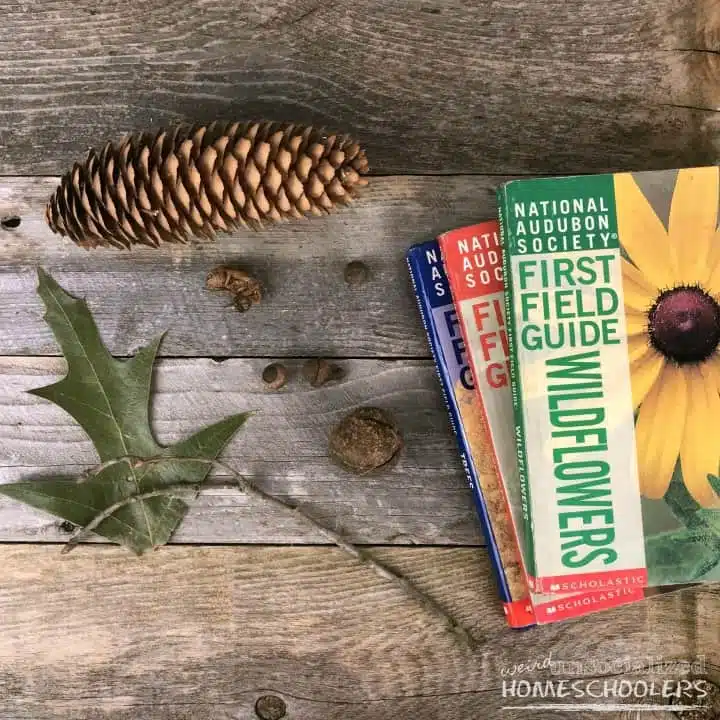
You may be like me and think you can’t do nature study because you live in the city or a subdivision. However, most families can successfully include more nature study than they may initially anticipate. Try these simple nature study tips for city dwellers.
Barb is also my go-to person for composer and artist study on her second blog, Harmony Fine Arts. Barb is a Charlotte Mason homeschooling mom who offers some excellent ebooks for composer and artist study. The books make it easy to do just a brief study or go in-depth as a full elective course.
Fantastic Charlotte Mason Resources
Try these simple tips for transitioning to a more Charlotte Mason style homeschool. If you’re still unsure, consider the fact that you don’t have to do these things every day. You might want to stick to your core curriculum on a 4-day week schedule and leave a day a week for more CM-style activities.
For more information on a Charlotte Mason style homeschool, check out some of my favorite resources.
Blogs and websites:
- Jimmie’s Collage has an entire Charlotte Mason section that is a wealth of information.
- Simply Charlotte Mason has a scripture memory system that we love!
- Ambleside Online features free Charlotte Mason style homeschool curriculum.
- Living Math demonstrates that you can even teach math in a CM style.
- Our Journey Westward is published by Cindy West, one of my favorite CM bloggers.
Books:
- A Charlotte Mason Education by Catherine Levinson
- More Charlotte Mason Education by Catherine Levinson
- A Charlotte Mason Companion by Karen Andreola
If you have transitioned from a more traditional homeschool style to Charlotte Mason, what tips would you add?
You Might Also Like
Kris Bales is a newly-retired homeschool mom and the quirky, Christ-following, painfully honest founder (and former owner) of Weird, Unsocialized Homeschoolers. She has a pretty serious addiction to sweet tea and Words with Friends. Kris and her husband of over 30 years are parents to three amazing homeschool grads. They share their home with three dogs, two cats, a ball python, a bearded dragon, and seven birds.



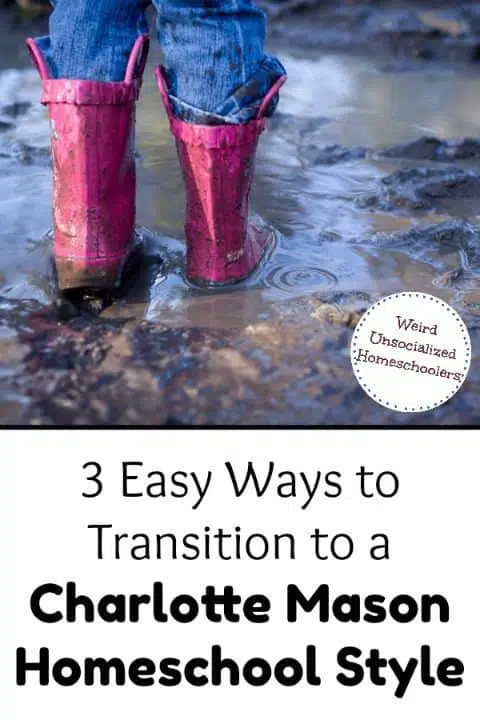


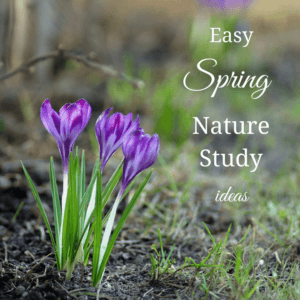
This is a great list! I really appreciate easy how-to’s like this, especially as we are in a time of transition and figuring out how we really want things to go. This is super helpful!
Thanks, Katie! I’m so glad the suggestions are helpful. It can take some time to flesh out your family’s own particular homeschooling style, so I always appreciate easy transitions instead of drastic change.
Thank you for sharing this!! My mother started homeschooling my siblings and I with a Charlotte Mason approach, and one of my favorite childhood memories was sitting on a blanket in the grass with Mom, drawing in our nature journals while she read Little House on the Prairie to us 🙂
Now, married and in my 20’s, it’s something I know I’ll want to incorporate into my children’s education. Blessings to you!